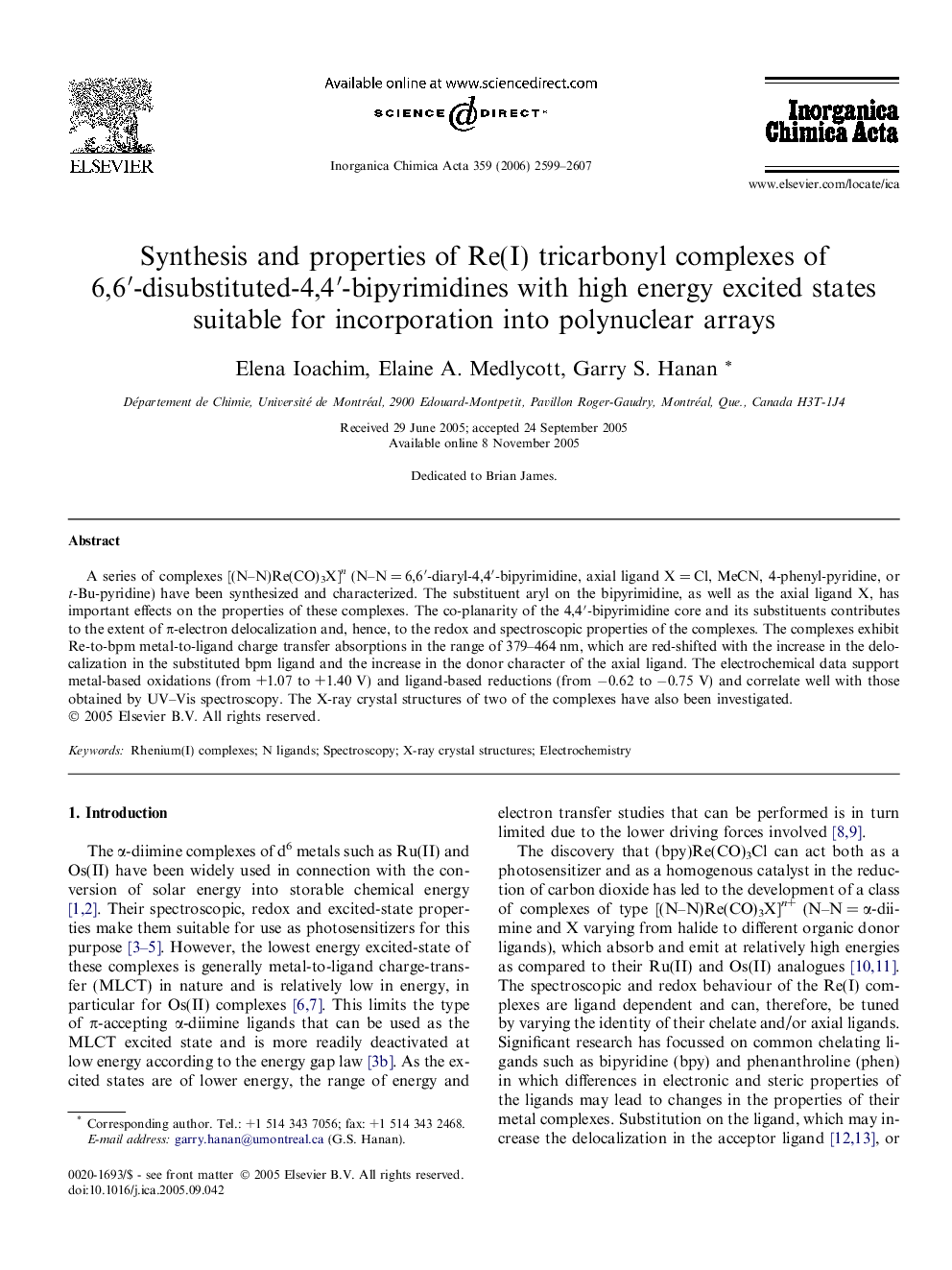| Article ID | Journal | Published Year | Pages | File Type |
|---|---|---|---|---|
| 1312995 | Inorganica Chimica Acta | 2006 | 9 Pages |
A series of complexes [(N–N)Re(CO)3X]n (N–N = 6,6′-diaryl-4,4′-bipyrimidine, axial ligand X = Cl, MeCN, 4-phenyl-pyridine, or t-Bu-pyridine) have been synthesized and characterized. The substituent aryl on the bipyrimidine, as well as the axial ligand X, has important effects on the properties of these complexes. The co-planarity of the 4,4′-bipyrimidine core and its substituents contributes to the extent of π-electron delocalization and, hence, to the redox and spectroscopic properties of the complexes. The complexes exhibit Re-to-bpm metal-to-ligand charge transfer absorptions in the range of 379–464 nm, which are red-shifted with the increase in the delocalization in the substituted bpm ligand and the increase in the donor character of the axial ligand. The electrochemical data support metal-based oxidations (from +1.07 to +1.40 V) and ligand-based reductions (from −0.62 to −0.75 V) and correlate well with those obtained by UV–Vis spectroscopy. The X-ray crystal structures of two of the complexes have also been investigated.
Graphical abstractThe Re(I) tricarbonyl complexes of substituted 4,4′-bipyrimidines are readily synthesized and exhibit higher energy MLCT states than typical Ru(II) and Os(II) polypyridyl complexes, which makes them suitable as high energy visible light absorbers in antenna complexes.Figure optionsDownload full-size imageDownload as PowerPoint slide
